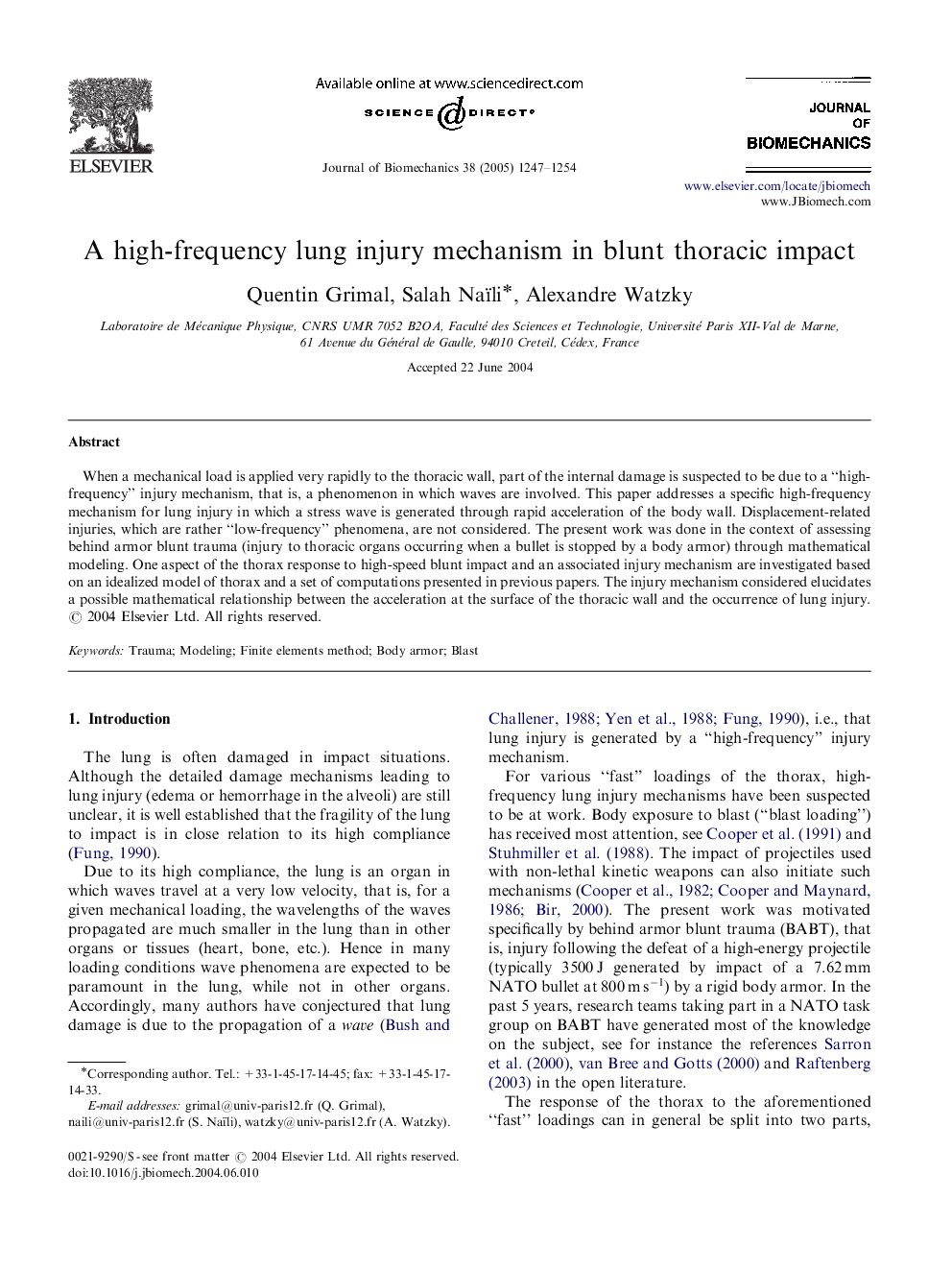| Article ID | Journal | Published Year | Pages | File Type |
|---|---|---|---|---|
| 10433839 | Journal of Biomechanics | 2005 | 8 Pages |
Abstract
When a mechanical load is applied very rapidly to the thoracic wall, part of the internal damage is suspected to be due to a “high-frequency” injury mechanism, that is, a phenomenon in which waves are involved. This paper addresses a specific high-frequency mechanism for lung injury in which a stress wave is generated through rapid acceleration of the body wall. Displacement-related injuries, which are rather “low-frequency” phenomena, are not considered. The present work was done in the context of assessing behind armor blunt trauma (injury to thoracic organs occurring when a bullet is stopped by a body armor) through mathematical modeling. One aspect of the thorax response to high-speed blunt impact and an associated injury mechanism are investigated based on an idealized model of thorax and a set of computations presented in previous papers. The injury mechanism considered elucidates a possible mathematical relationship between the acceleration at the surface of the thoracic wall and the occurrence of lung injury.
Related Topics
Physical Sciences and Engineering
Engineering
Biomedical Engineering
Authors
Quentin Grimal, Salah Naïli, Alexandre Watzky,
